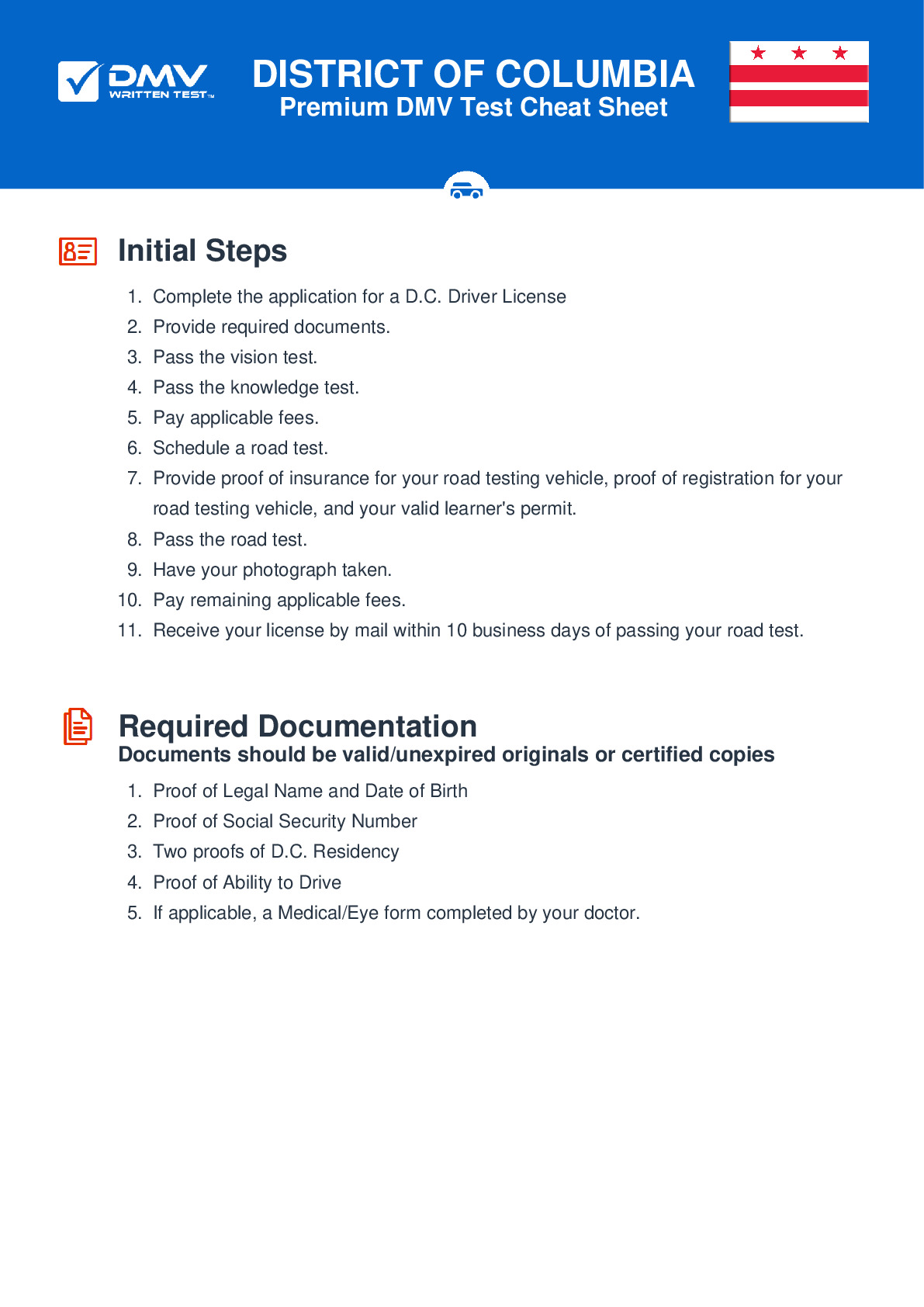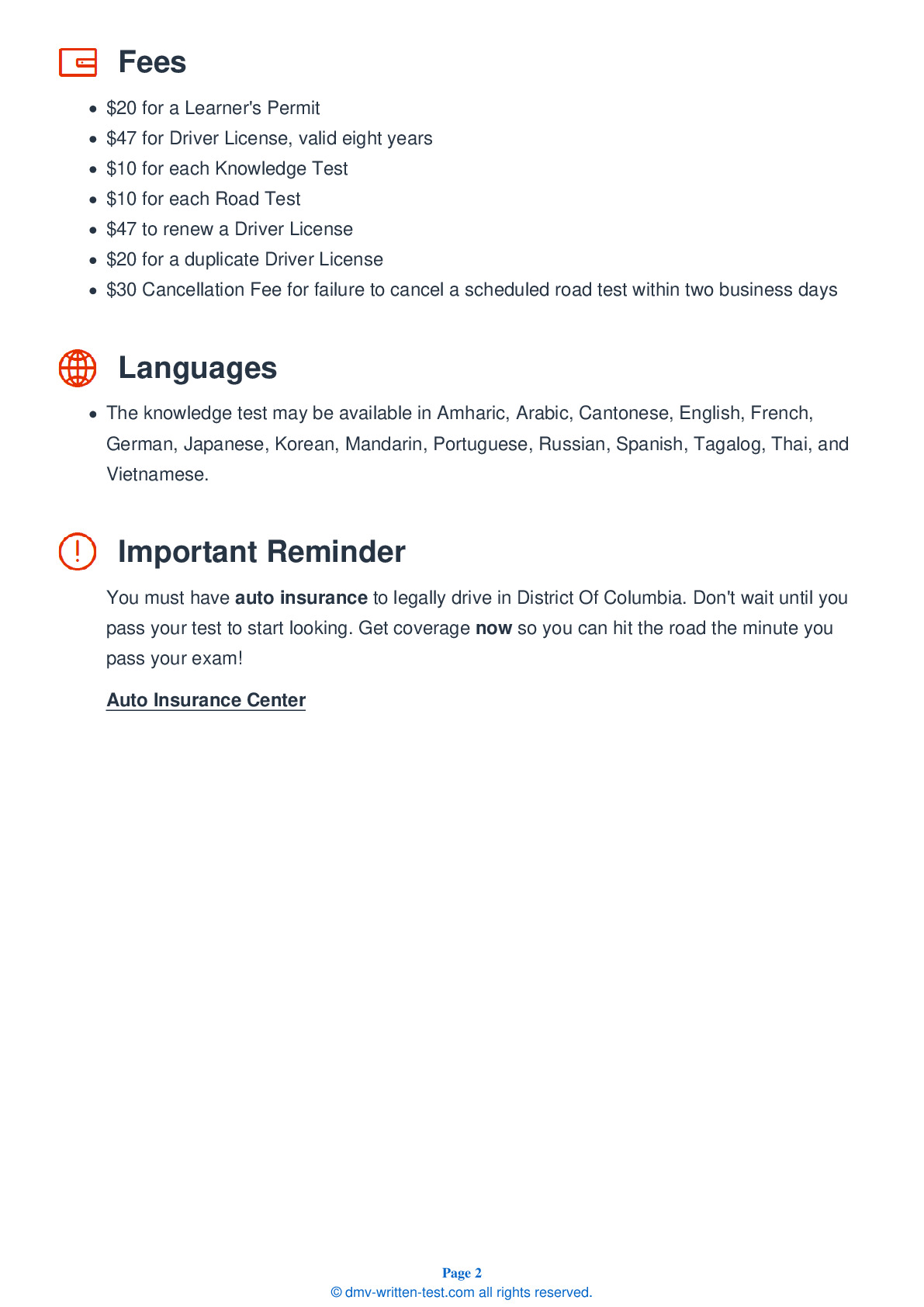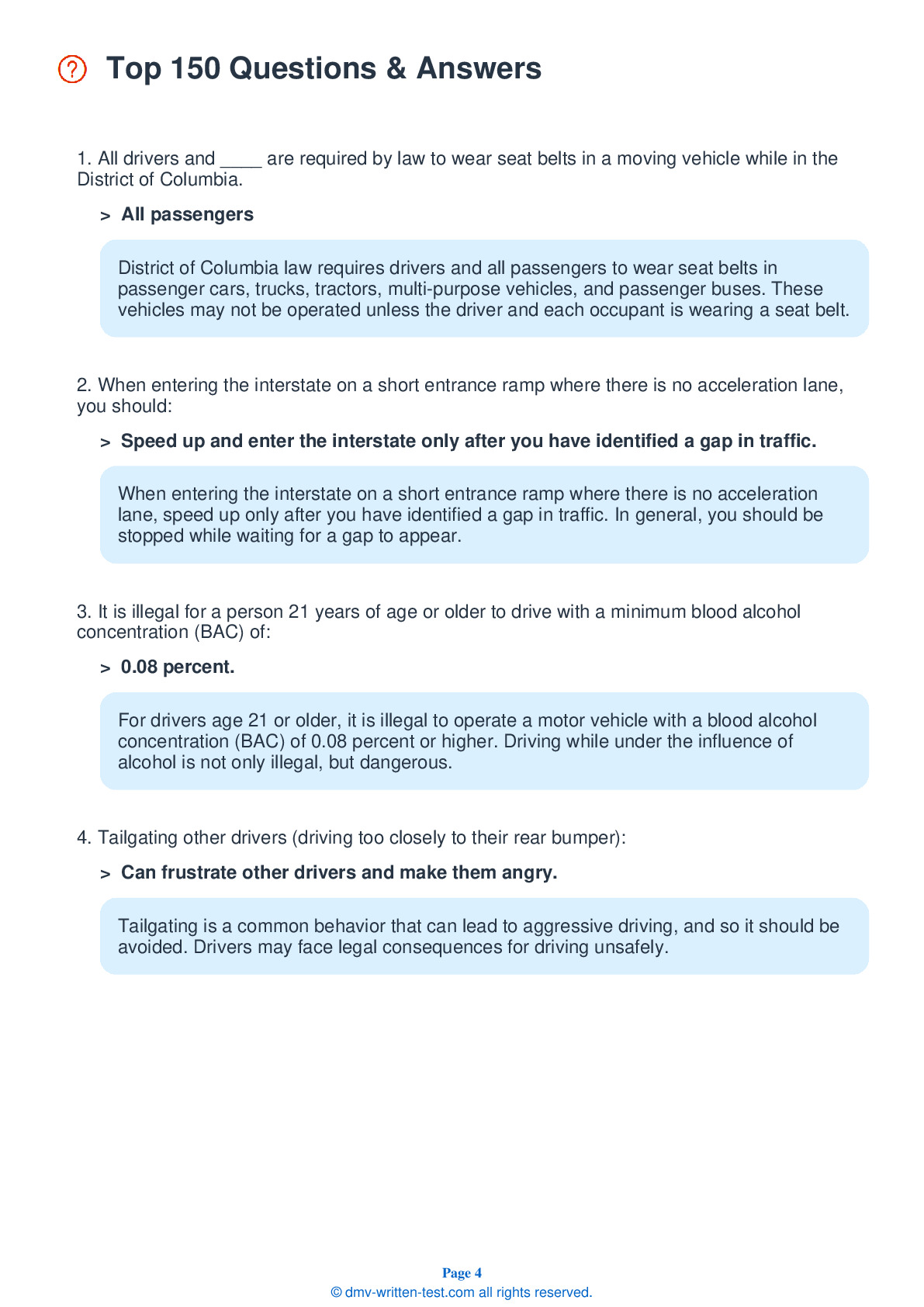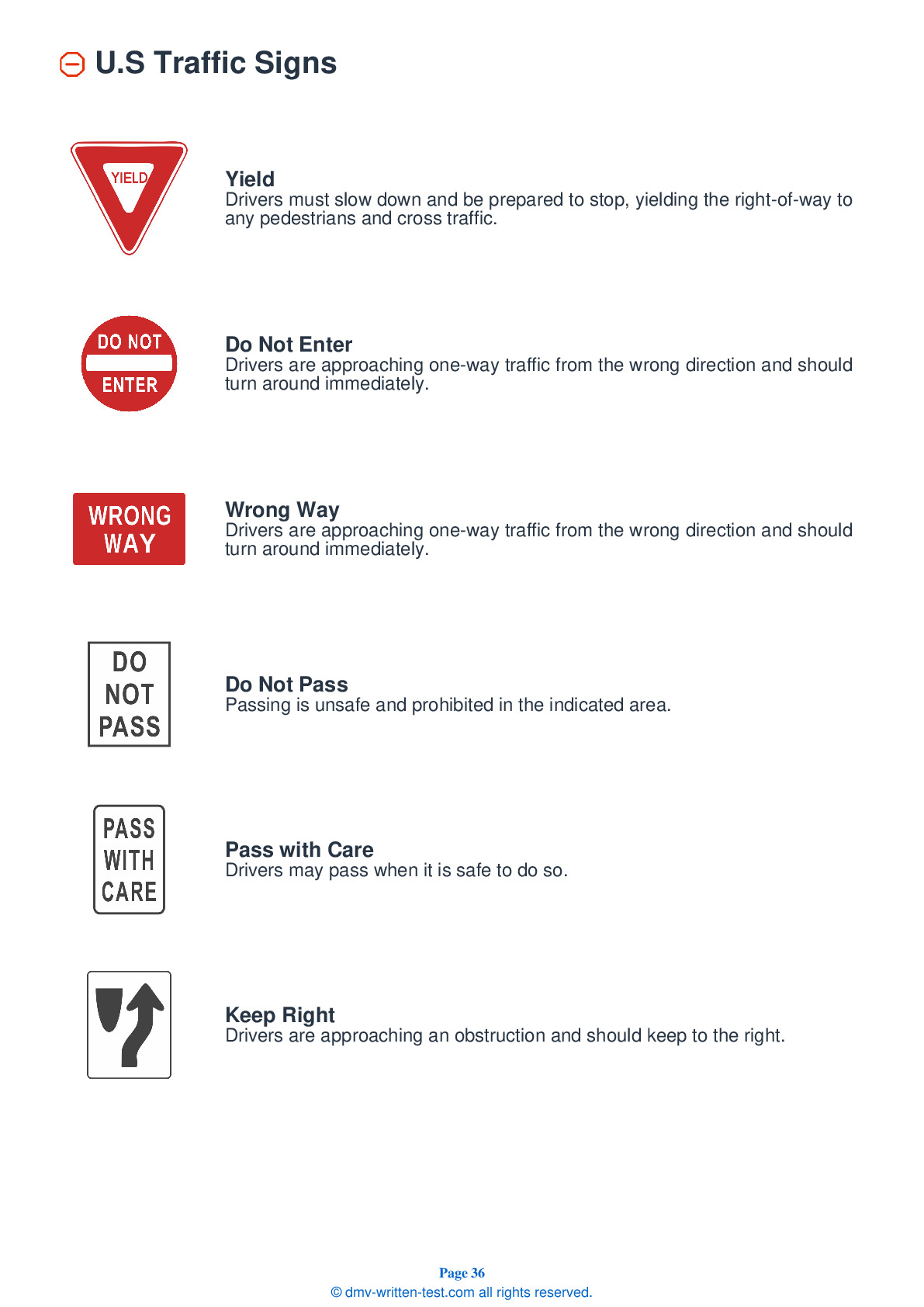2025 District Of Columbia Permit Test 9
The following questions are from real DMV written tests. These are some of the actual permit questions you will face in District Of Columbia. Each permit practice test question has three answer choices. Select one answer for each question and select "grade this section." You can find this button at the bottom of the drivers license quiz. For a complete list of questions and answers for District Of Columbia please visit https://cheat-sheets.dmv-written-test.com/en/district-of-columbia/car.
Number of Tests
Number of Question
Passing Score
17. Double solid yellow line markings down the center of a road indicate that passing is:
Explanation
A double yellow centerline means that it is prohibited for traffic from either direction to cross the centerline to pass.
18. Use your headlights on rainy, snowy, or foggy days:
Explanation
On rainy, snowy, or foggy days, it may be difficult for other drivers to see your vehicle. Under these conditions, headlights make your vehicle easier to see. If the weather requires you to turn on your windshield wipers, you must also turn on your low beam headlights.
19. Work zone signs mean:
Explanation
Work zone signs are orange and indicate that some type of work is being performed on or alongside the roadway. Be extremely careful when you see these signs.
20. Trucks' blind spots are:
Explanation
A truck's blind spots are much larger than a smaller car’s blind spots. The driver cannot see your car behind their vehicle and you can't see what’s happening in traffic ahead if you're driving too closely behind the truck. Whether you are driving behind or to the side of the truck, if you can’t see the driver’s face in their side view mirror, then they can’t see you.
21. Your blind spot is the area of the road:
Explanation
Blind spots are areas that a driver cannot see without moving their head. They can be located to the sides of and behind a vehicle.
22. At dawn or dusk and in rain or snow, it can be hard to see and be seen. A good way to let other drivers know you are there is to turn:
Explanation
You must use your headlights at any time when conditions prevent you from seeing other vehicles and when it may be difficult for other drivers to see you. Always use your low beam headlights if weather conditions require you to use your windshield wipers.
23. Which of the following is true about driving on a wet roadway?
Explanation
The faster you drive on a wet roadway, the less effective your tires will be at wiping the water from the road. If your speed becomes excessive enough, your tires will lose their grip on the road entirely and you will begin to hydroplane (that is, to slide down the road on a film of water).
24. After being pulled over by law enforcement, a driver should immediately exit the vehicle and quickly approach the officer’s squad car.
Explanation
If stopped by law enforcement, you should stay in your vehicle with both hands clearly in sight on the steering wheel.
25. What should you do if your accelerator sticks while you are driving?
Explanation




